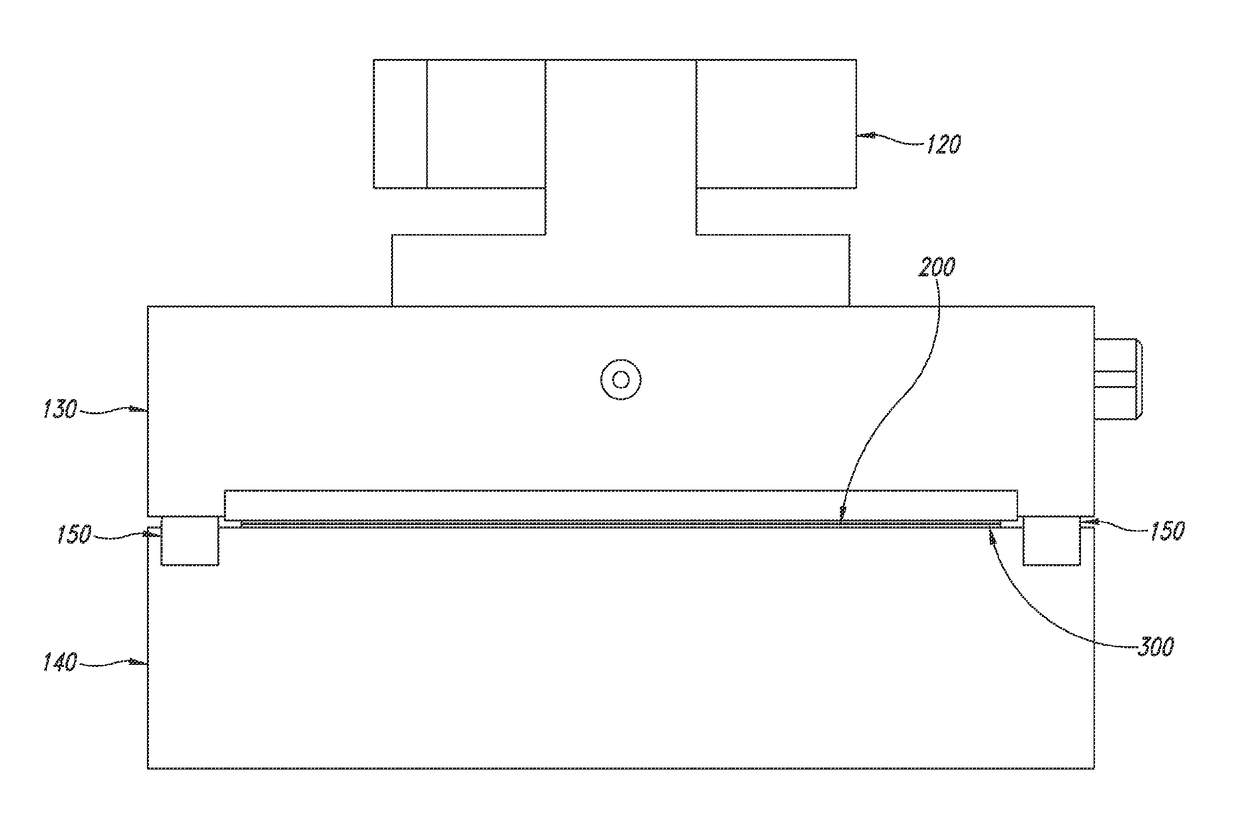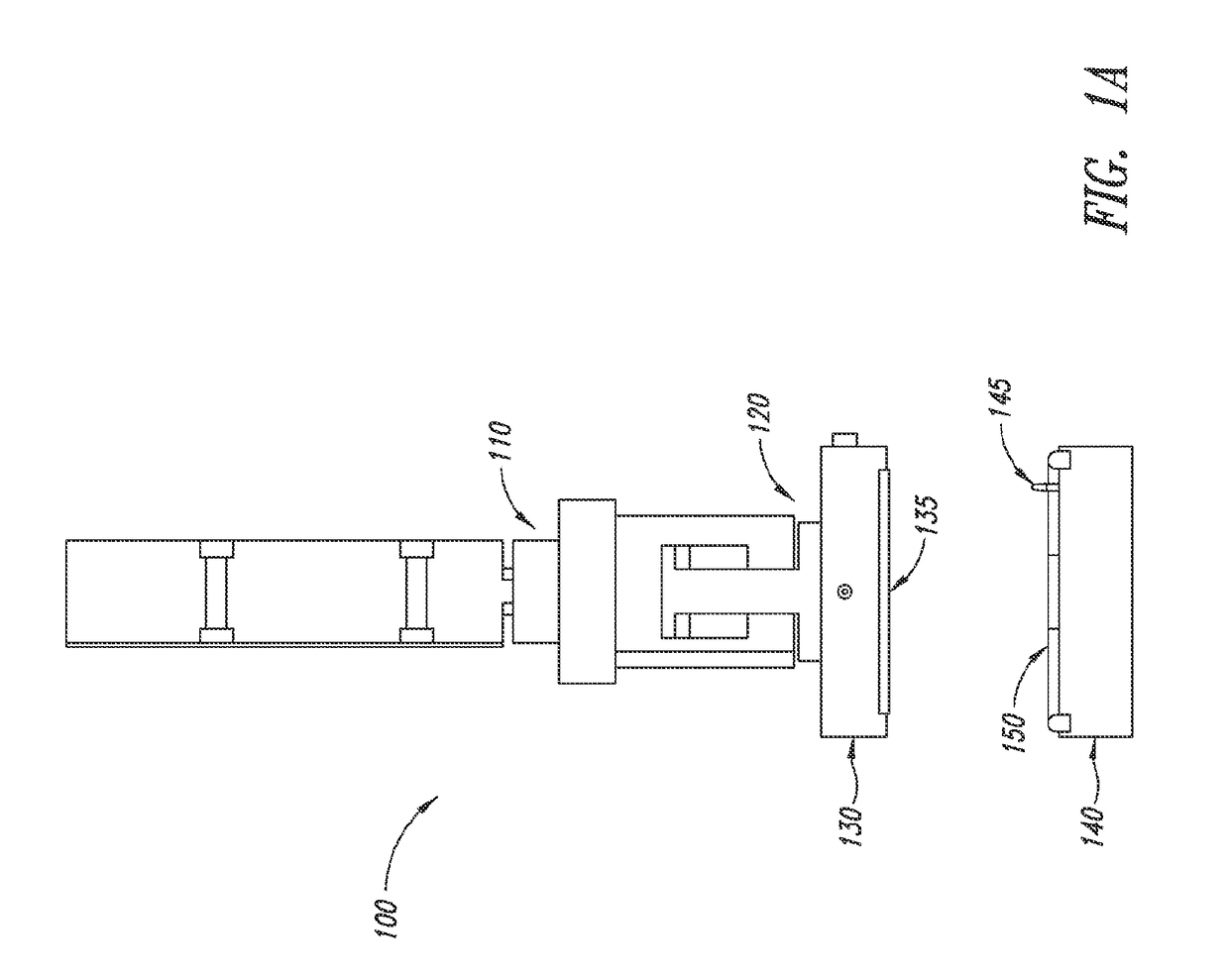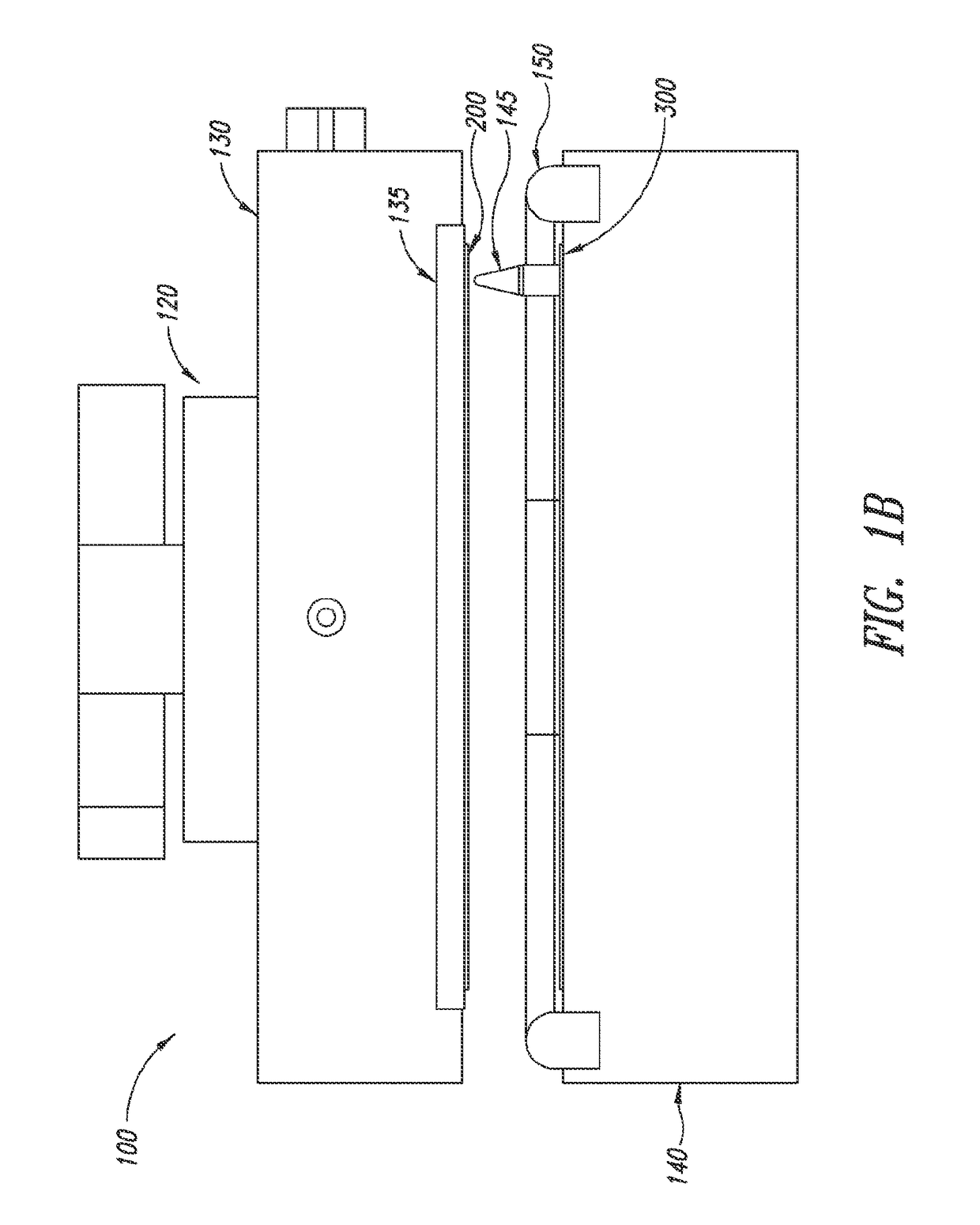Methods and apparatus for lamination of rigid substrates by sequential application of vacuum and mechanical force
a technology of rigid substrates and vacuum and mechanical force, applied in the direction of presses, manufacturing tools, synthetic resin layered products, etc., can solve the problems of distorted or completely blocked microfluidic pathways, affecting the lamination effect of rigid substrates, and bending surfaces of roller-based systems not optimal for lamination of rigid substrates
- Summary
- Abstract
- Description
- Claims
- Application Information
AI Technical Summary
Benefits of technology
Problems solved by technology
Method used
Image
Examples
Embodiment Construction
[0024]FIGS. 1A and 1B show cutaway and close-up views, respectively, of one embodiment of a lamination apparatus 100 of the present invention in a load position. In this configuration, cylinder 110 and cylinder 120 are in a retracted position. In certain embodiments, cylinder 110 may be referred to as the “long-stroke cylinder” and cylinder 120 may be referred to as the “short-stroke cylinder”. In this embodiment, an upper surface of the apparatus is provided by cover portion 130, which may be referred to as the “top vacuum chuck”, and a lower surface is provided by base portion 140, which may be referred to as the “bottom vacuum chuck”. In this depiction, the apparatus is configured to receive a stack of substrates to be laminated. Top vacuum chuck may optionally be provided with a compliant silicone pressure pad 135. Bottom vacuum chuck 140 may be provided with one or more alignment pins 145 to maintain precise register and alignment of surfaces and substrates during lamination. G...
PUM
| Property | Measurement | Unit |
|---|---|---|
| Force | aaaaa | aaaaa |
| Flexibility | aaaaa | aaaaa |
| Heat | aaaaa | aaaaa |
Abstract
Description
Claims
Application Information
 Login to View More
Login to View More - R&D
- Intellectual Property
- Life Sciences
- Materials
- Tech Scout
- Unparalleled Data Quality
- Higher Quality Content
- 60% Fewer Hallucinations
Browse by: Latest US Patents, China's latest patents, Technical Efficacy Thesaurus, Application Domain, Technology Topic, Popular Technical Reports.
© 2025 PatSnap. All rights reserved.Legal|Privacy policy|Modern Slavery Act Transparency Statement|Sitemap|About US| Contact US: help@patsnap.com



